The Deformation Behaviors and Mechanism of the High-Temperature Mechanical Properties of a Ni48W35Co17 Alloy
Abstract
:1. Introduction
2. Experimental Procedure
3. Results
3.1. Tensile Properties of the Ni48W35Co17 Alloy at Different Temperatures
3.2. Microstructure of Sample Tensile at Different Temperatures
3.3. TEM Analyses of the Deformation Areas of Sample Tensile at Different Temperatures
4. Discussion
4.1. Variation in Microstructures and Properties at Elevated Temperatures
4.2. Strengthening Mechanisms of the Ni48W35Co17 Alloy
5. Conclusions
- (1)
- The strength of the Ni48W35Co17 alloy decreases as the temperature increases, obeying an exponential relationship. An abnormal decrease in elongations at temperatures from 400 °C to 800 °C is found in this alloy. The tensile strength of the alloy is 471 MPa at 600 °C, which is 38% lower than that at 400 °C. The elongation rate of the alloy is 19% at 600 °C, which is 72% lower than that at 400 °C.
- (2)
- Numerous tiny precipitates can be found at 600 °C, which might be the reason for the decrease in the plasticity of the alloy. The structure of the NiW phase is orthogonal, and the orientation relationship between the matrix and NiW phase is (200)Ni//(240)NiW and [001]Ni//[001]NiW. The cross-slip of dislocations is consequently hindered by the formation and transformation of these ordered precipitates.
- (3)
- The tensile plastic deformation mechanism of the sample at low temperature is dominated by dislocation slip, whereas the tensile plastic deformation mechanism at high temperature shows that not only the dislocation slip mechanism but also the twinning mechanism plays a paramount role. The strengthening of the alloy at 600 °C mainly depends on the solid solution, grain boundary, and precipitation strengthening.
Author Contributions
Funding
Data Availability Statement
Conflicts of Interest
References
- Levin, Z.S.; Hartwig, K.T. Hardness and microstructure of tungsten heavy alloy subjected to severe plastic deformation and post-processing heat treatment. Mater. Sci. Eng. A 2015, 635, 94–101. [Google Scholar] [CrossRef]
- Hu, K.; Li, X.; Ai, X.; Qu, S.; Li, Y. Fabrication, characterization, and mechanical properties of 93W-4. 9Ni-2. 1Fe/95W-2. 8Ni-1. 2Fe-1Al2O3 heavy alloy composites. Mater. Sci. Eng. A 2015, 636, 452–458. [Google Scholar] [CrossRef]
- Xu, Z.; Huang, F. Thermomechanical behavior and constitutive modeling of tungsten-based composite over wide temperature and strain rate ranges. Int. J. Plast. 2013, 40, 163–184. [Google Scholar] [CrossRef]
- Li, Y.; Hu, K.; Li, X.; Ai, X.; Qu, S. Fine-grained 93W–5.6Ni–1.4Fe heavy alloys with enhanced performance prepared by spark plasma sintering. Mater. Sci. Eng. A 2013, 573, 245–252. [Google Scholar] [CrossRef]
- Li, Y.; Liu, G.Q.; Hu, X.B.; Wu, L.H.; Tan, C.W.; Dravid, V.P.; Liu, S.Z. A novel medium heavy alloy (MHA) with excellent static/dynamic properties and impact toughness. Scr. Mater. 2019, 162, 311–315. [Google Scholar] [CrossRef]
- Hu, D.Y.; Meng, K.P.; Jiang, H.L. Experimental Investigation of Dynamic Properties of AerMet 100 Steel. Procedia Eng. 2015, 99, 1459–1464. [Google Scholar] [CrossRef] [Green Version]
- Shi, X.; Zeng, W.; Zhao, Q.; Peng, W.; Kang, C. Study on the microstructure and mechanical properties of Aermet 100 steel at the tempering temperature around 482 °C. J. Alloy. Compd. 2016, 679, 184–190. [Google Scholar] [CrossRef]
- Yadav, S.; Ramesh, K.T. The mechanical properties of tungsten-based composites at very high strain rates. Mater. Sci. Eng. A 1995, 203, 140–153. [Google Scholar] [CrossRef]
- Lee, W.S.; Su, T.T. Mechanical properties and microstructural features of AISI 4340 high-strength alloy steel under quenched and tempered conditions. J. Mater. Process. Technol. 1999, 87, 198–206. [Google Scholar] [CrossRef]
- Lai, G.Y.; Wood, W.E.; Clark, R.A.; Zackay, V.F.; Parker, E.R. The effect of austenitizing temperature on the microstructure and mechanical properties of as-quenched 4340 steel. Metall. Mater. Trans. B 1974, 5, 1663–1670. [Google Scholar] [CrossRef]
- Humail, I.S.; Akhtar, F.; Askari, S.J.; Tufail, M.; Qu, X. Tensile behavior change depending on the varying tungsten content of W–Ni–Fe alloys. Int. J. Refract. Met. Hard Mater. 2007, 25, 380–385. [Google Scholar] [CrossRef]
- Gero, R.; Borukhin, L.; Pikus, I. Some structural effects of plastic deformation on tungsten heavy metal alloys. Mater. Sci. Eng. A 2001, 302, 162–167. [Google Scholar] [CrossRef]
- Ye, T.; Yi, J.; Li, L.; Peng, Y.; Lu, Y.; Hu, L. New Advances in Study of Tungsten Heavy Alloys. Mater. Rev. 2003, 17, 15–18. [Google Scholar]
- Ravi Kiran, U.; Panchal, A.; Sankaranarayana, M.; Nageswara Rao, G.V.S.; Nandy, T.K. Effect of alloying addition and microstructural parameters on mechanical properties of 93% tungsten heavy alloys. Mater. Sci. Eng. A 2015, 640, 82–90. [Google Scholar] [CrossRef]
- Liu, G.Q.; Wang, C.X.; Liu, S.Z.; Li, Y.; Tan, C.W.; Liu, Z.C. Effect of aging treatment on microstructure and properties of NiW750 high-density alloy. Mater. Sci. Technol. 2019, 27, 36–43. [Google Scholar]
- German, R.M.; Bourguignon, L.L.; Rabin, B.H. Microstructure Limitations of High Tungsten Content Heavy Alloys. Phys. Metall. Mater. 1985, 37, 36–39. [Google Scholar] [CrossRef]
- Liu, Z.; Nie, Z.; Ning, X.; Zhao, X.; Yu, X.; Wang, F.; Tan, C. Mechanical response and microstructural evolution of Ni-27 W alloys during uniaxial tension. J. Alloys Compd. 2021, 891, 161972. [Google Scholar]
- Das, J.; Kiran, U.R.; Chakraborty, A.; Prasad, N.E. Hardness and tensile properties of tungsten based heavy alloys prepared by liquid phase sintering technique. Int. J. Refract. Met. Hard Mater. 2009, 27, 577–583. [Google Scholar] [CrossRef]
- Ding, L.; Xiang, D.P.; Li, Y.Y.; Zhao, Y.W.; Li, J.B. Phase, microstructure and properties evolution of fine-grained W–Mo–Ni–Fe alloy during spark plasma sintering. Mater. Des. 2012, 37, 8–12. [Google Scholar] [CrossRef]
- Das, J.; Sarkar, R.; Rao, G.A.; Sankaranarayana, M.; Nandy, T.K.; Pabi, S.K. Flow behaviour of a heat treated tungsten heavy alloy. Mater. Sci. Eng. A 2012, 553, 119–127. [Google Scholar] [CrossRef]
- Starink, M.J.; Wang, S.C. A model for the yield strength of overaged Al-Zn-Mg-Cu alloys. Acta Mater. 2003, 51, 5131–5150. [Google Scholar] [CrossRef] [Green Version]
- Zhang, X.; Godfrey, A.; Huang, X.; Hansen, N.; Liu, Q. Microstructure and strengthening mechanisms in cold-drawn pearlitic steel wire. Acta Mater. 2011, 59, 3422–3430. [Google Scholar] [CrossRef]
- Chihiro, W.; Satoshi, T.; Ryoichi, M. Effects of Small Addition of Ti on Strength and Microstructure of a Cu-Ni-Si Alloy. Metall. Mater. Trans. A 2015, 46, 2469–2475. [Google Scholar]
- Goodchild, D.; Roberts, W.T.; Wilson, D.V. Plastic deformation and phase transformation in textured austenitic stainless steel. Acta Metall. 1970, 18, 1137–1145. [Google Scholar] [CrossRef]
- Mabuchi, M.; Higashi, K. Strengthening mechanisms of Mg–Si alloys. Acta Mater. 1996, 44, 4611–4618. [Google Scholar] [CrossRef]
- Lee, J.; Jung, J.Y.; Lee, E.S.; Park, W.J.; Ahn, S.; Kim, N.J. Microstructure and properties of titanium boride dispersed Cu alloys fabricated by spray forming. Mater. Sci. Eng. 2000, 277, 274–283. [Google Scholar] [CrossRef]
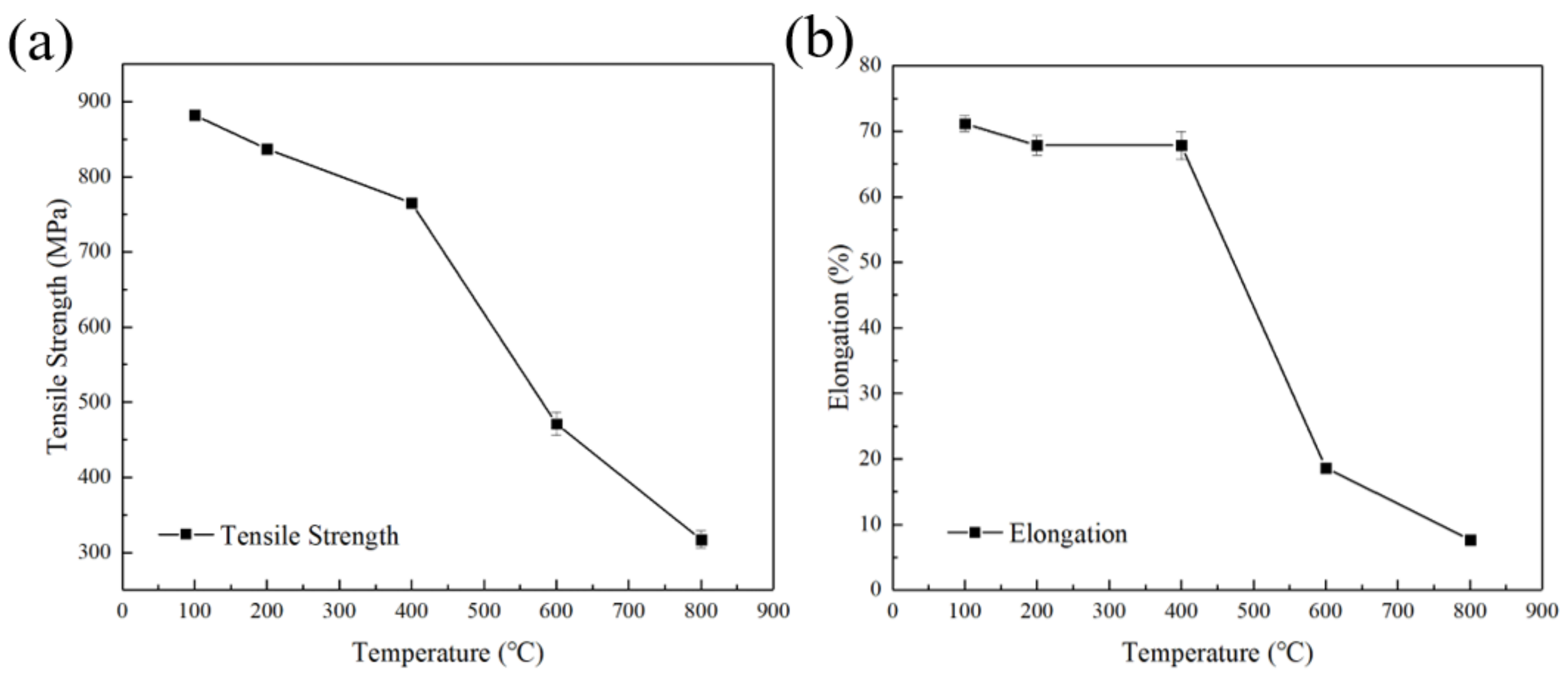

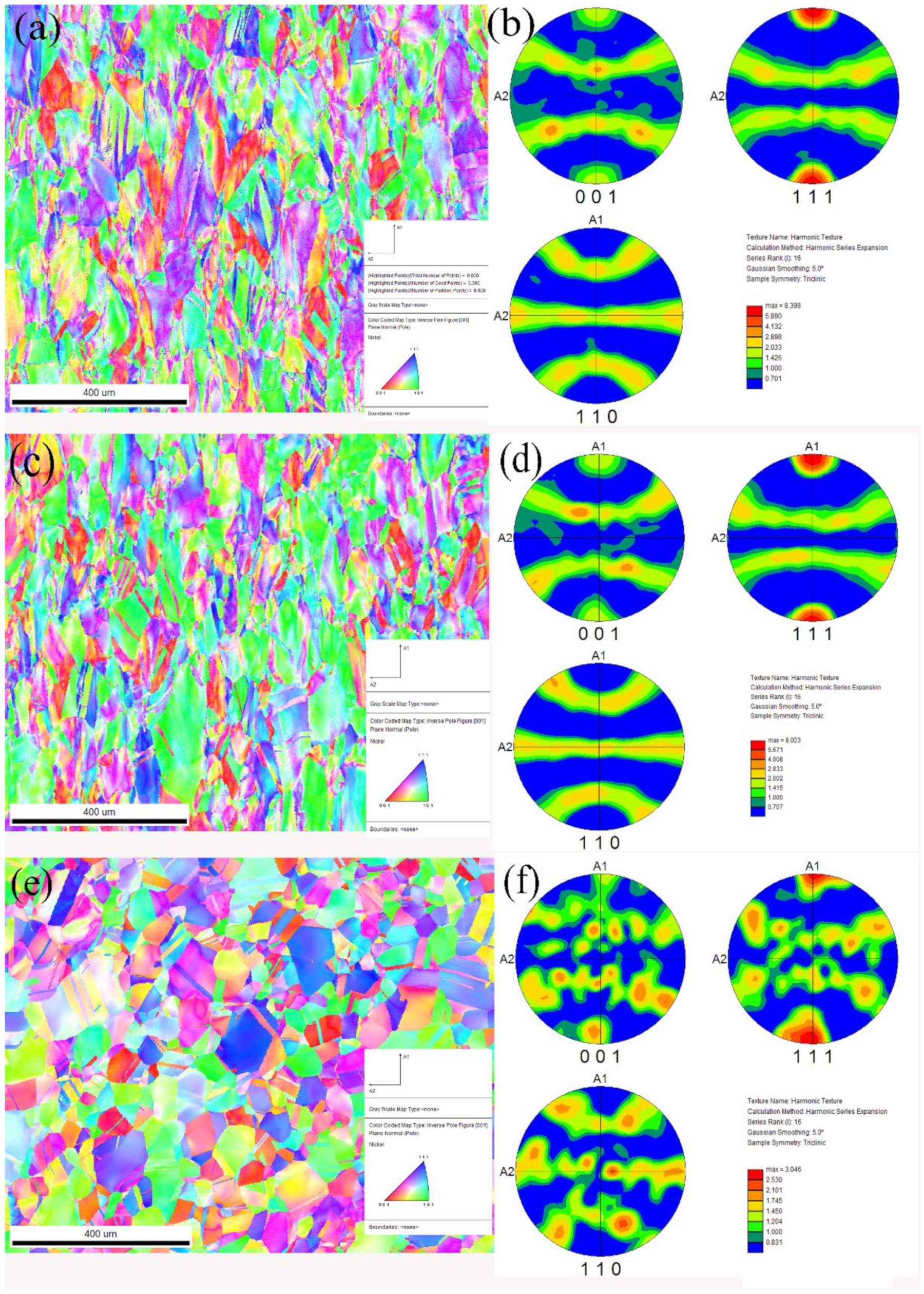

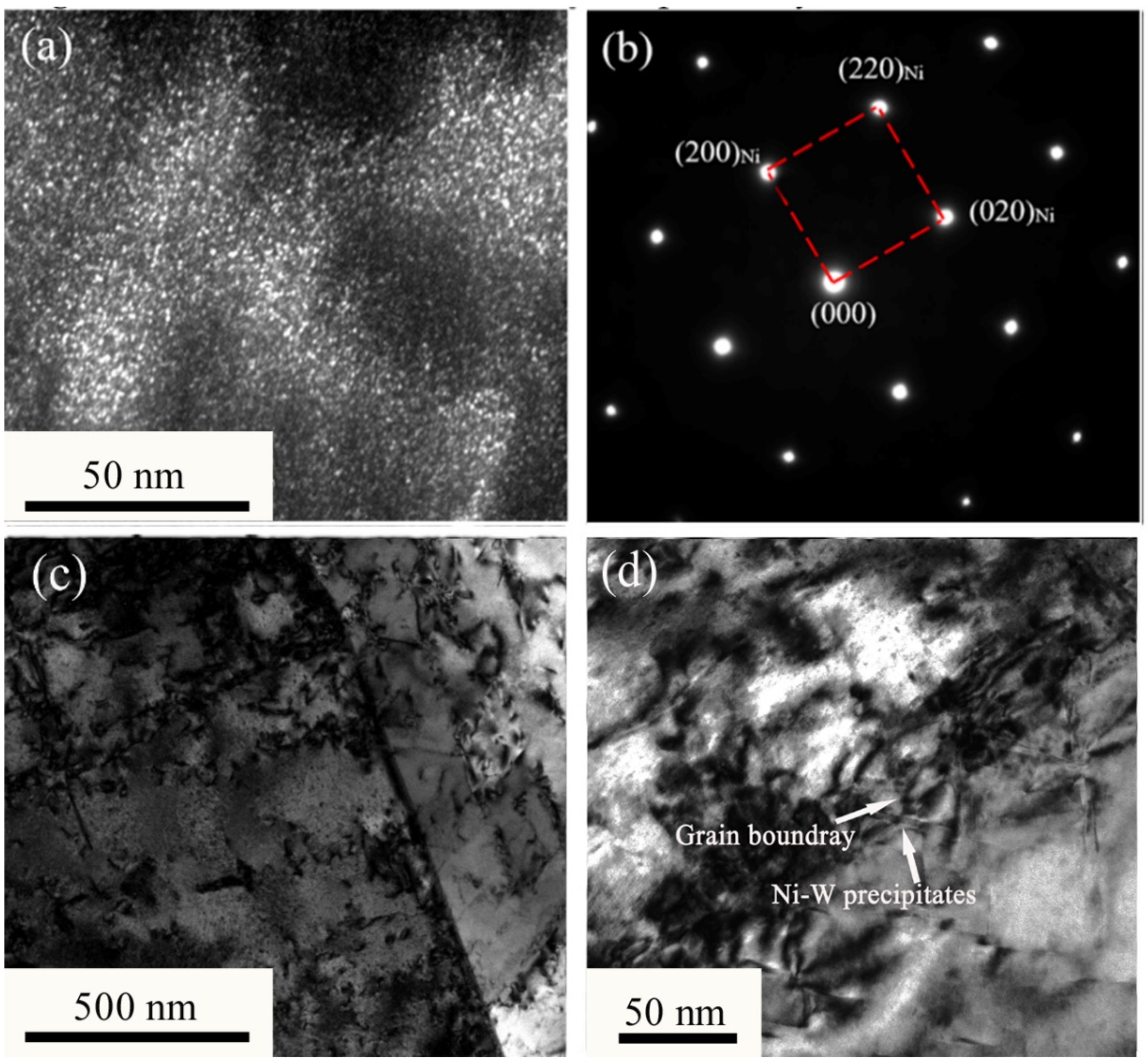

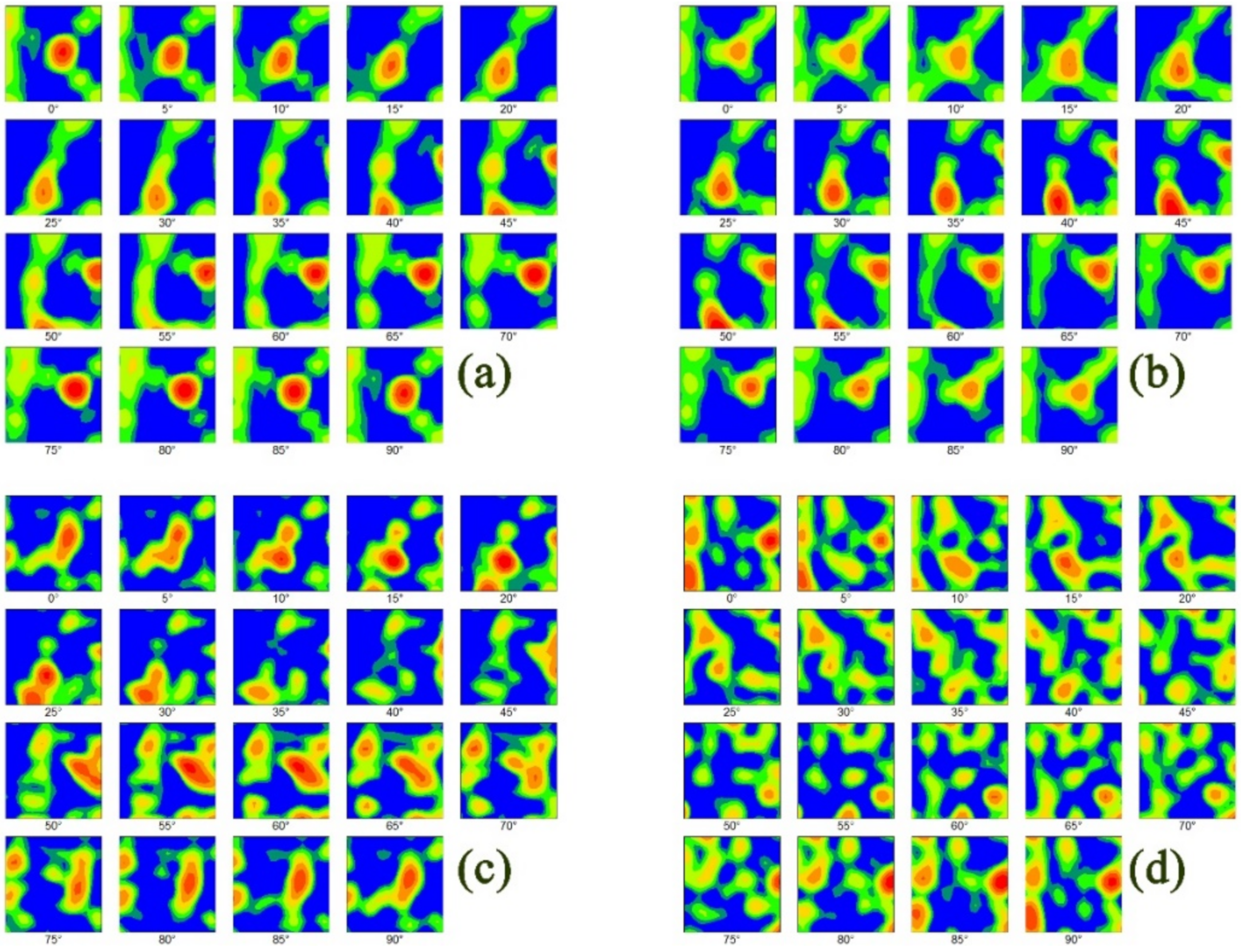
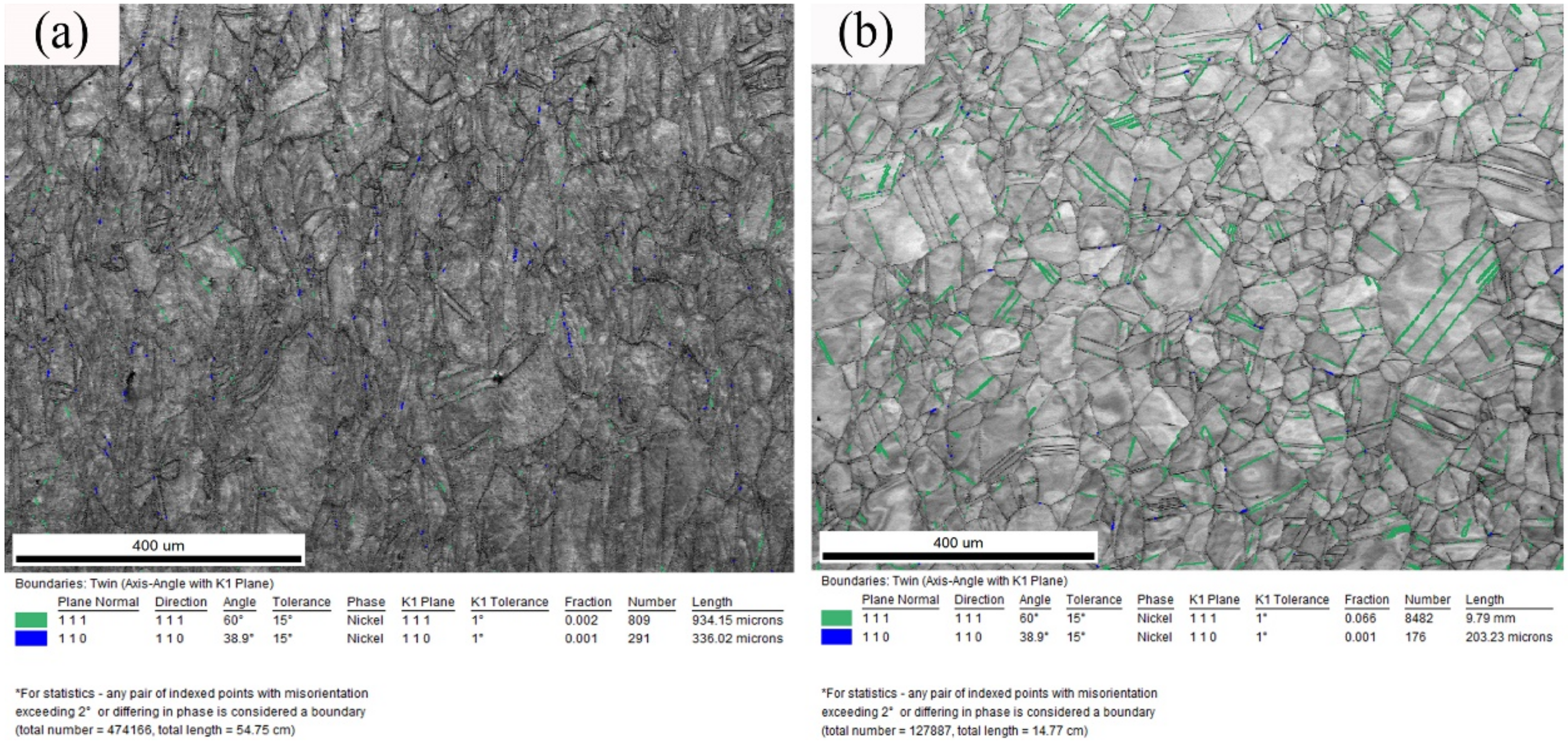
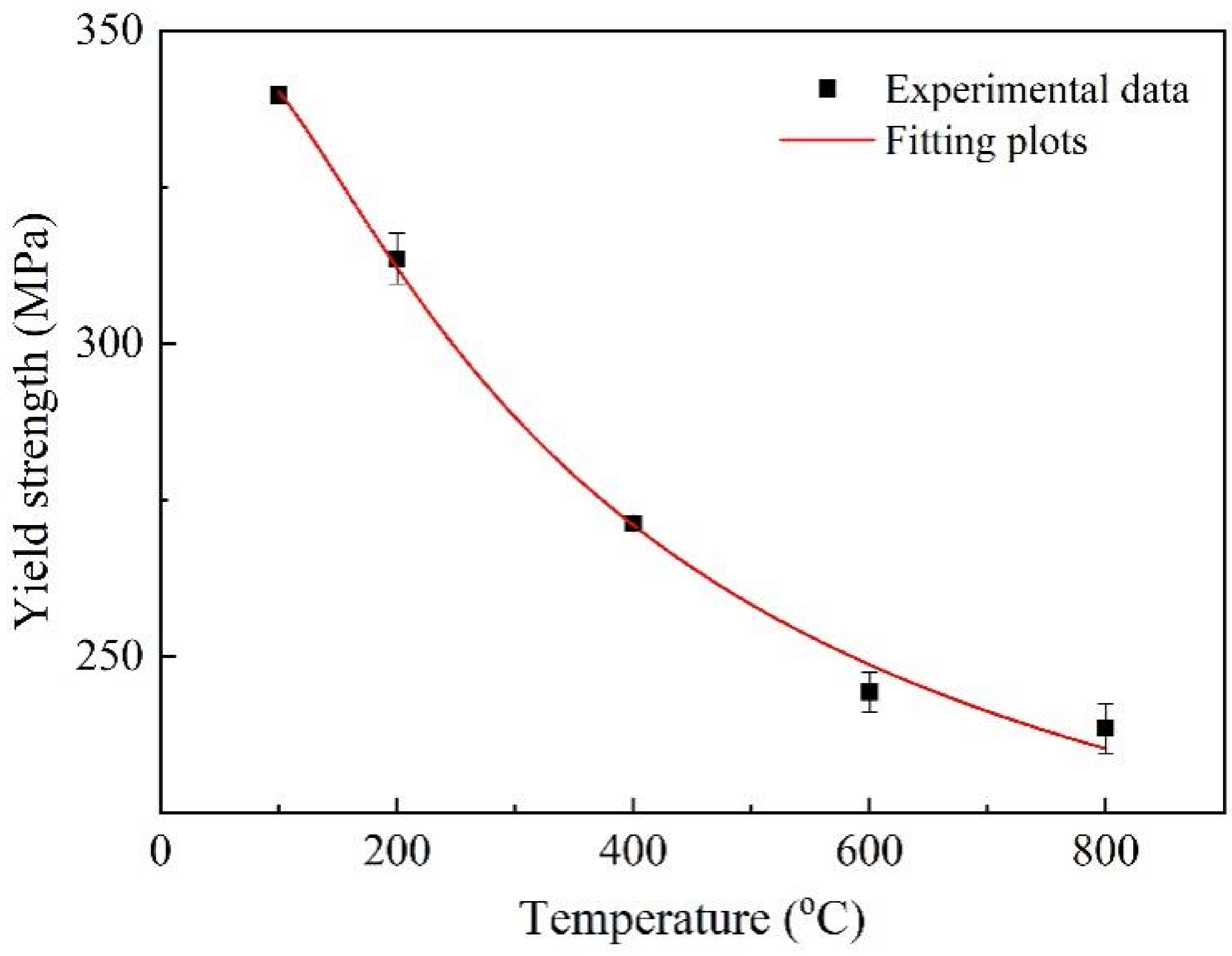
| Temperature (°C) | Tensile Strength (Mpa) | Elongation (%) |
|---|---|---|
| 100 | 882 | 71.2 |
| 200 | 837 | 67.8 |
| 400 | 765 | 67.8 |
| 600 | 471 | 18.7 |
| 800 | 317 | 7.7 |
Publisher’s Note: MDPI stays neutral with regard to jurisdictional claims in published maps and institutional affiliations. |
© 2021 by the authors. Licensee MDPI, Basel, Switzerland. This article is an open access article distributed under the terms and conditions of the Creative Commons Attribution (CC BY) license (https://creativecommons.org/licenses/by/4.0/).
Share and Cite
Xie, G.; Xue, W.; Fu, Y.; Feng, K.; Wang, R.; Zheng, L. The Deformation Behaviors and Mechanism of the High-Temperature Mechanical Properties of a Ni48W35Co17 Alloy. Metals 2021, 11, 1755. https://doi.org/10.3390/met11111755
Xie G, Xue W, Fu Y, Feng K, Wang R, Zheng L. The Deformation Behaviors and Mechanism of the High-Temperature Mechanical Properties of a Ni48W35Co17 Alloy. Metals. 2021; 11(11):1755. https://doi.org/10.3390/met11111755
Chicago/Turabian StyleXie, Guoliang, Wenli Xue, Yilei Fu, Kai Feng, Rui Wang, and Lei Zheng. 2021. "The Deformation Behaviors and Mechanism of the High-Temperature Mechanical Properties of a Ni48W35Co17 Alloy" Metals 11, no. 11: 1755. https://doi.org/10.3390/met11111755
APA StyleXie, G., Xue, W., Fu, Y., Feng, K., Wang, R., & Zheng, L. (2021). The Deformation Behaviors and Mechanism of the High-Temperature Mechanical Properties of a Ni48W35Co17 Alloy. Metals, 11(11), 1755. https://doi.org/10.3390/met11111755







